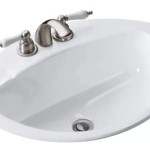How To Remove A Bathroom Vent Fan
Bathroom vent fans play a crucial role in maintaining air quality and preventing moisture buildup. Over time, these fans can become clogged with dust, debris, or simply wear out, necessitating removal and replacement or cleaning. This guide outlines the steps involved in safely and effectively removing a bathroom vent fan.
Safety Precautions: Before beginning any electrical work, safety should be the top priority. Turn off the power to the bathroom vent fan circuit at the main electrical panel. Verify the power is off by using a non-contact voltage tester on the fan's wiring.
Accessing the Vent Fan: Most bathroom vent fans are accessed through the ceiling. Locate the fan's housing and carefully remove the cover. The method of removal varies depending on the model. Some covers are held in place with spring clips, while others may be secured with screws. Gently pry the cover loose or remove the screws as necessary. Once the cover is removed, the fan and its housing will be exposed.
Disconnecting the Wiring: With the power off, carefully disconnect the wiring connected to the fan motor. Most fans have wire connectors that can be twisted off. Label the wires with masking tape and a pen to ensure correct reconnection later if needed. Common wires include black (hot), white (neutral), and green or bare copper (ground). Documenting the wiring configuration with a photograph is also a recommended practice.
Detaching the Housing: The fan housing is typically attached to the ceiling joists with screws or clips. Locate these fasteners and carefully remove them. If the housing is caulked to the ceiling, a utility knife may be needed to carefully cut the sealant. Once the fasteners are removed, gently lower the housing and disconnect the ducting.
Removing the Ducting: The ductwork connected to the vent fan is typically either flexible aluminum or rigid PVC pipe. If the ductwork is flexible, loosen the clamp securing it to the fan housing and carefully detach it. For rigid PVC pipe, loosen the screws or detach the couplings connecting the pipe to the fan housing. If the ductwork runs through insulation, take care not to disturb the insulation unnecessarily.
Removing the Fan Motor: Once the housing is detached and the ducting removed, the fan motor itself can be removed. This typically involves removing screws that secure the motor to the housing. Depending on the model, the motor may be integrated with the fan blades or separate. Carefully remove the motor and set it aside.
Cleaning the Vent Fan Components (Optional): If the fan is being removed for cleaning, carefully wipe down the fan blades, motor housing, and other components with a damp cloth. A mild detergent can be used if necessary. Ensure all components are completely dry before reassembling.
Reinstalling or Replacing the Vent Fan: If replacing the fan, ensure the new fan is compatible with the existing ductwork and wiring. Follow the manufacturer's instructions for installation, carefully connecting the wiring, attaching the housing, and reconnecting the ductwork. If reinstalling the cleaned fan, reverse the removal process, ensuring all connections are secure and the housing is properly fastened.
Working with Different Fan Types: While the general process remains similar, certain fan types may have specific considerations:
Recessed Fans: These are the most common type and are typically installed within the ceiling joists. Accessing them often requires removing the ceiling cover.
Surface-Mounted Fans: These are installed directly on the ceiling surface and are generally easier to access and remove, often requiring only the removal of a few screws.
Inline Fans: These fans are installed within the ductwork itself and may require accessing the ductwork in the attic or crawlspace for removal.
Dealing with Difficult Situations: Several challenges can arise during vent fan removal. Older homes may have brittle ductwork that can crack or break easily. In such cases, it is advisable to replace the ductwork. Limited access to the fan housing can make removal difficult. If unsure about any aspect of the removal process, consulting a qualified electrician is recommended.
Dealing with Insulation: Exercise caution when working around insulation. Wear appropriate protective gear such as gloves and a mask. Avoid disturbing the insulation as much as possible to maintain its effectiveness.
Disposing of the Old Fan: Dispose of the old fan according to local regulations. Some components may be recyclable.

How To Replace A Bathroom Fan With Pictures Wikihow

How To Replace A Bathroom Fan With Pictures Wikihow

Not Sure How To Remove Old Bathroom Fan Install New One Doityourself Com Community Forums

Remove Install A Bathroom Fan Grille In 1 Min

How To Replace A Bathroom Fan With Pictures Wikihow

Bathroom Vent Fan Remove Cover And Clean Dust
How To Remove A Bathroom Fan Quora

How To Clean A Bathroom Fan Diy Family Handyman

How To Clean A Bathroom Fan Diy Family Handyman

Tips For Installing Or Replacing A Bathroom Fan Forbes Home
Related Posts







